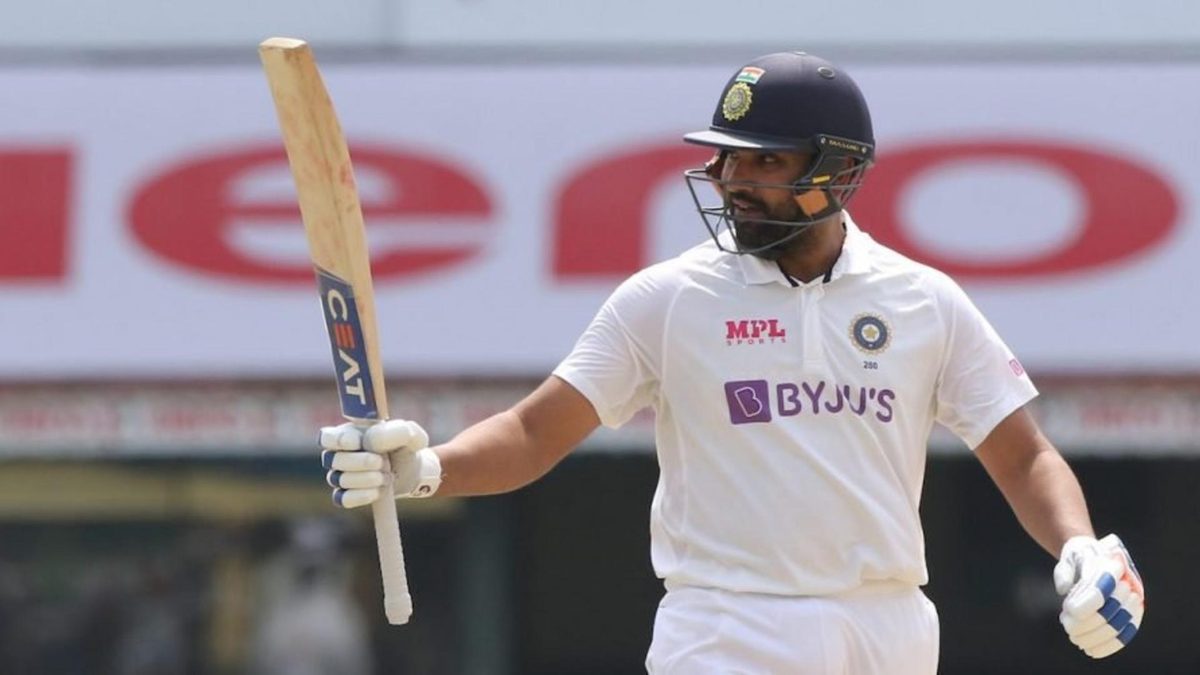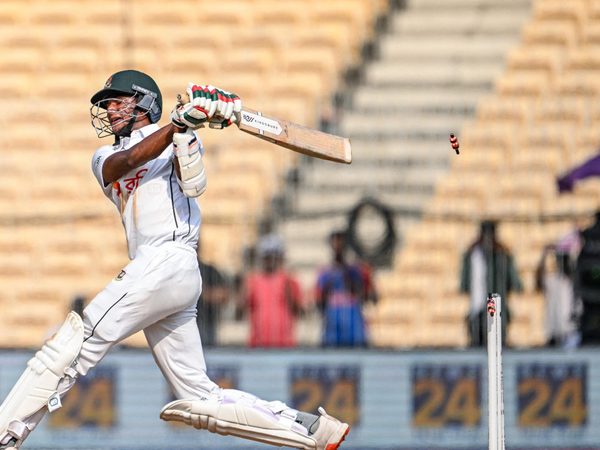
On a Chennai pitch that required batsmen to play with a clear head against spinners, Rohit Sharma produced one of his trademark knocks, mixing control with a calculated assault to bury the opposition under a big pile of runs.
Rohit Sharma is currently standing at a rather intriguing juncture in his Test career. He’s 33 years old and 35 matches in, opening alongside a 21-year-old, dubbed by many as the future of Indian cricket. He’s keeping out a 29-year-old opener, whose belated entry to Test cricket almost instantly translated into a juicy run of form, and another 21-year-old who’s just as talented as his current partner.
In such a scenario, discussions of every failure are invariably accompanied by an extra bit of context, mentions of the history and future, dissecting his previous failings as a Test cricketer, and questioning his role in the Test team’s long-term plan.
A streak of seven consecutive fifty-less innings didn’t exactly appear like a genuine loss of form though; since his return to the Test team in January, Rohit had strung together half-baked bits of brilliance – there was a buttery cover drive in one game, a lazily beautiful pull in another, but he couldn’t extend his knocks beyond those ten-second video reels.
Deep Dasgupta, the cricketer-turned-commentator, recently described his head-scratching run rather aptly: “He’s looked good. He’s not out of form, he’s out of runs.”
You get the sense Rohit doesn’t care what anyone else thinks about his Test career. He knows it’s about runs, more runs and big runs, and he’s got plenty banked. He has now hit 40 international centuries, 11 of which have been 150+ scores. And, all of those daddy hundreds carry a simple, shared skeleton – he starts gradually but rarely goes into his shell, chipping away with boundaries and always having a release shot to keep the bowlers under pressure. And once the base is set, his intent and concentration rarely relent before he’s assembled a mountain.
Rohit and India both needed a version of that against England in Chennai, and he employed all of it during his 161 in the first innings, mixing an additional bit of spark along the way. It almost felt like you were watching a stretched-out form of his many double hundreds in one-dayers. Perhaps that’s how he needs to approach Test cricket everywhere.
On a track that had Virat Kohli cleaned up by a sharply-turning corker, Rohit rarely looked out of depth, and seemed to have an immaculately chalked-out plan ready, one that his batting teammates need to get a hold of. A good part of it was to do his clarity of thought on his approach, a major ingredient needed to succeed on Indian pitches.
As Sunil Gavaskar, who’s closely observed Rohit Sharma for years, remarked on commentary, he seldom plays the cut shot, instead relying on his reach, or his feet, to blunt the turn outside the crease.
176, 127, 212, 100*
Rohit Sharma, take a bow.#INDvENG https://t.co/x4pTbAqrog
— Wisden India (@WisdenIndia) February 13, 2021
An integral facet of any Rohit masterclass is the perfect balance between defence and offence, he finds a way to keep the opposition attack under check, and comes out with a combination of mini-counter-attack to retain the upper hand. Every innings seems to be a fresh start, what he scored in the previous one doesn’t ever seem to matter to him.
On a Chennai pitch that Rahane declared would turn from day one, he employed two distinct sweeps to counter turn: for deliveries pitched outside off, he broomed the ball with a flourish, bringing his bat from far out to clear the ball away to the leg-side. It’s a stroke he played with commendable authority, often puncturing the field between deep midwicket and deep fine-leg.
The other sweep was the more delicate paddle, his bat neatly tilted at an angle as he absorbed the pace off the dry surface and nudged the ball behind him. Against Moeen Ali’s off-spin, it proved to be an effective option. If the bowler compensated by keeping it a little more outside off, he hung back and calmly guided the ball past slip.
For the more flighted deliveries, Rohit’s quick feet regularly led him out of the pitch, and he nurdled the ball around with ease. Slowly, England’s spinners lost track of what exactly was a good area to bowl. According to ESPNcricinfo, by the time Rohit reached his 150, he had batted with 86 per cent control, and the sweep shot alone fetched him 25 runs. He was both in form and among the runs.
However, it wasn’t just Rohit’s approach against spinners that was critical to his success but also a calculated attack against the quicks.
Rohit Sharma has scored rapidly against England's quicks today. Against Broad, Stone, and Stokes, he's flown along at 5.7rpo, compared to 3.9rpo against the spinners. #INDvENG
— The CricViz Analyst (@cricvizanalyst) February 13, 2021
It began with a few glorious strokes against the new ball, starting with in the third over – a delectable cover drive that made an applauding Virat Kohli let out a roar from inside the dressing room. Within the next ten overs, it was followed by an exquisite on-drive, a slash past point, and a swatted six off a bumper. The early assault put him firmly into his zone before he unfurled his sweep-first approach against the spinners. At lunch, India were 106-3, 80 of which were Rohit’s.
It was quite an anti-climax that it was the sweep itself that brought his downfall, an off-balance hoick on one knee that flew right into deep square leg’s hands. According to CricViz, it was only the third time he had been dismissed playing the sweep in Test cricket. Between his first delivery and his 231st delivery, there was little that didn’t feel under his control.
Through his 161-run effort, Rohit diffused all discussions over his spot, reaffirming his value as a big-knock giant at home and painting a beautiful picture of how to tackle off-spin on a dusty, turning track. It’s a hallmark of his batting – when he’s on song, the conditions, bowlers or scenario matter little. It’s all about those ten-second clips, fused together into a full-length highlights package.








